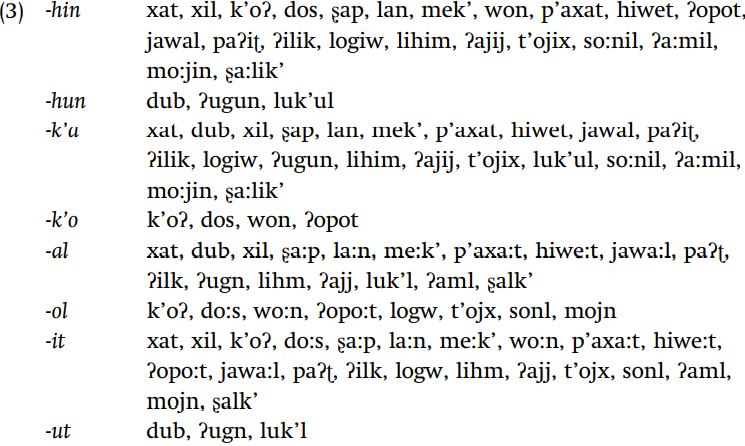
The first step: morphology
 المؤلف:
David Odden
المؤلف:
David Odden
 المصدر:
Introducing Phonology
المصدر:
Introducing Phonology
 الجزء والصفحة:
149-6
الجزء والصفحة:
149-6
 31-3-2022
31-3-2022
 1567
1567
The first step: morphology
First we need a morphological analysis of the data. In a simple case, this involves looking at columns and rows of data, and figuring out which subparts of words are consistently present with one meaning, and which other subparts are consistently present with other meanings. This task is more complicated when the surface shape of roots and affixes changes due to phonological rules. We cannot provide a definitive morphological analysis of these data without knowing what the phonological system is, and certainty as to the phonological rules is impossible without knowing the morphological analysis. We break out of this seeming circle by adopting – and constantly revising in the face of new evidence – a preliminary and less precise analysis of the phonology and morphology. Improvement in the underlying representations should result in better rules, and as we refine the system of rules, the nature of the underlying distinctions becomes clearer.
In this case, four suffixes are added to roots, -hin ~ -hun ‘nonfuture,’ -k’a ~ -k’o ‘imperative,’ -al ~ -ol ‘dubitative’, and -it ~ -ut ‘passive aorist.’ The notation -hin ~ -hun indicates that the suffix is pronounced either as -hin or as -hun. We need to discover when one form versus the other is used, and express that relation in terms of an underlying form and a rule changing the underlying form.
Stem variants. Some stems have only one surface shape: xat- ‘eat,’ dub- ‘lead by hand,’ xil- ‘tangle,’ and k’oʔ- ‘throw,’ so the most natural assumption would be that these are the underlying forms for these particular stems (this assumption may turn out to be wrong, but it is a good starting assumption). Most stems in the data set have two surface manifestations. An important first step in understanding the rules of the language is to identify the alternations in the data, and one way to make the alternations explicit is to list the phonetic variants of each stem.


In these cases, decisions must be made regarding the underlying forms.
Suffix variants. We must decide what the underlying form of each suffix is, and they all have two surface variants in terms of their vowel: either a nonrounded vowel or a rounded vowel. For each suffix, we group the verbs in terms of which variant of the suffix is used with them.

 الاكثر قراءة في Morphology
الاكثر قراءة في Morphology
 اخر الاخبار
اخر الاخبار
اخبار العتبة العباسية المقدسة


